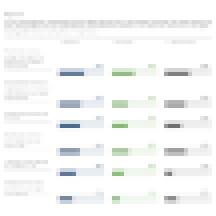When new trends become the norm, report findings sometimes elicit more shrugs than surprise. That’s arguably the case for U.S. smartphone and Wi-Fi adoption, which continues to grow unabated as evidenced in latest internet trends deck from renowned investor Mary Meeker.
In education technology, a litany of surveys published this decade have touted the growing adoption of digital learning tools. Recent studies by Deloitte and the Gates Foundation have shed light into how educators engage with edtech.
Now adding to that list is one of the most thorough efforts—a new survey from Gallup and NewSchools Venture Fund, a nonprofit that provides grants to education technology and innovation efforts.
Surveying 3,210 teachers, 1,163 principals, 1,219 district administrators and 2,696 students across the country, the report offers one of the most comprehensive looks at their attitudes toward digital learning tools and how they use them.
The bird’s-eye results: 65 percent of teachers say they use digital learning tools every day; 87 percent report using them at least a few days each week. And about 70 percent of students say that they use edtech tools outside of schools on a weekly basis.
Those numbers suggest edtech is steadily marching into schools and classrooms. That’s music to the ears of industry leaders who have funded and built many of these digital tools. It is also not too surprising, given that for much of this decade businesses and governments have laid the infrastructure needed to support online learning, through enabling better broadband internet access and providing cheap computing devices to schools.
But beyond the high-level numbers, the report also examines the factors that shape what educators choose to use, the supports and obstacles they encounter and the changes they want to see.
A different ‘digital divide’ has emerged.
The “digital divide” in education technology often refers to concerns over whether those from underprivileged backgrounds have access to instructional software and tools. But as the usage and positive perception of digital learning tools grow in U.S. schools, that term may be taking on a different meaning.
Two-thirds of teachers from high-poverty schools say they teach with edtech every day, which is on par with the response (62 percent) from their peers in low-poverty schools. A noticeably higher percentage of educators from high-poverty schools believe that digital tools are helpful for students, versus their peers in low-poverty environments (70 percent versus 48 percent).
“The question now is not ‘if,’ but ‘how’ digital learning tools are being used,” says Stephanie Marken, executive director of education research at Gallup.
An accompanying blog post published by NewSchools Venture Fund noted that “fewer teachers in high-poverty schools say they use ed tech for collaboration, creation and independent research” than their peers in low poverty areas.
“An individual tool is only as good as the educator who is implementing it,” says Marken. “Anything we introduce, whether it be a pencil, a piece of paper, textbook or technology, will fail if teachers are not prepared to use them effectively.”
To that point, the report found that a lack of training and professional development is the most highly cited reason that teachers give for not using digital learning tools. More than half of teachers and administrators, and 49 percent of principals, agree with this sentiment.

More than 4 in 10 teachers report spending their own money to buy digital learning tools. Administrators believe the number is lower.
Unfortunately, it’s no surprise that teachers spend out of pocket on classroom materials. Last year, a U.S. Department of Education survey found that 94 percent of teachers do so, spending $479 on average.
It appears some of these purchases are moving into the digital realm as well. According to the survey, 43 percent of teachers say they purchase digital learning with their own money. By contrast, only about one-third of principals and administrators say their teachers are spending out of pocket; school leaders overwhelming report their schools and districts are the ones paying.

“Teachers are consistently buying their own resources, and for individual teachers who do this [for digital purchases], I can’t imagine how this doesn’t add to the list of reasons that they are frustrated. It’s a real problem,” says Marken.
Purchasing decisions about digital learning tools are often made, or at least informed, by school officials for several reasons, among which are ensuring that data privacy and security protocols are in place. Not all teachers are aware or knowledgeable about what to look for.
“There’s got to be a balance between making sure teachers have some autonomy in choosing and buying their tools, and effectively giving them the information they need to make those decisions responsibly,” Marken adds.
Without reliable and accessible information about the effectiveness of digital learning tools, most educators consult one another to decide what to use.
“One of the challenges we saw in this study is that teachers still feel like they don’t have sufficient information about effectiveness before choosing a tool,” says Marken. In the report, only about a quarter of teachers, principals and administrators say there is “a lot” of information available about the effectiveness of edtech products.
In the absence of such information, all three educator roles overwhelmingly listed “other teachers” as the among the most trustworthy sources that inform what digital tools they use in classrooms.

That’s not to say that case studies and efficacy reports don’t exist. A number of efforts from the nonprofits including Digital Promise and the Jefferson Education Exchange have been trying to make efficacy research more available, accessible and digestible for educators. But there’s still much room for improvement. For teachers especially, evidence-based reports and case studies ranked near the bottom of resources that they say they trust. (By contrast, principals and administrators view research more favorably.)
“That’s not necessarily a bad thing that teachers rely on each other, because they have the most practical insights into how tools can be used in the classroom,” observes Marken. At the same time, “this is a call to action to think about how we can scale existing research and information, and make them more widely accessible.”
Schools are not hesitant to pull the plug on duds, however. Sixty-five percent of administrators said that their district has stopped using an edtech product, with the most common reason being that it did not improve learning outcomes.
What Teachers and Students Value Most
When deciding what to use, teachers say they value tools that provide immediate and actionable data on students’ progress, followed by those that allow them to personalize their instruction based on students’ different needs and skill levels.
“Teachers want data that make it possible for them to adapt their instruction,” says Marken. “That should be an important factor for edtech developers to keep in mind as they consider how their products can help [teachers] in their work.”

As for the thousands of students who were also surveyed for this report? Many of them said they wished tools could be “more interesting” and “more fun.” Without more specificity, it’s unclear what developers could take away from these comments. But suffice it to say, kids expect that the tech they use in schools should resemble the tools they use at home or for fun, says Debbie Veney, director of communications and policy at NewSchools Venture Fund.
“From ordering a pizza to learning in school, today’s digital native kids expect a high-end user experience,” she says. “They believe that edtech should deliver not just instructional value, but should also be entertaining and attractive.”


